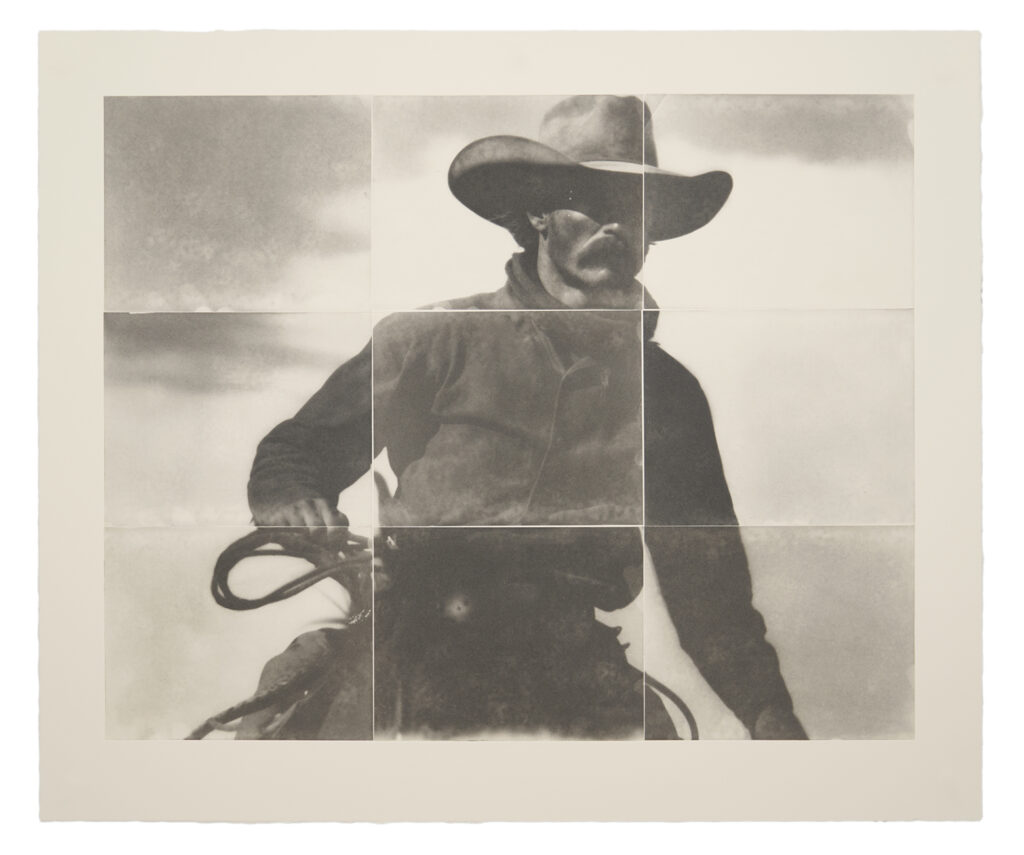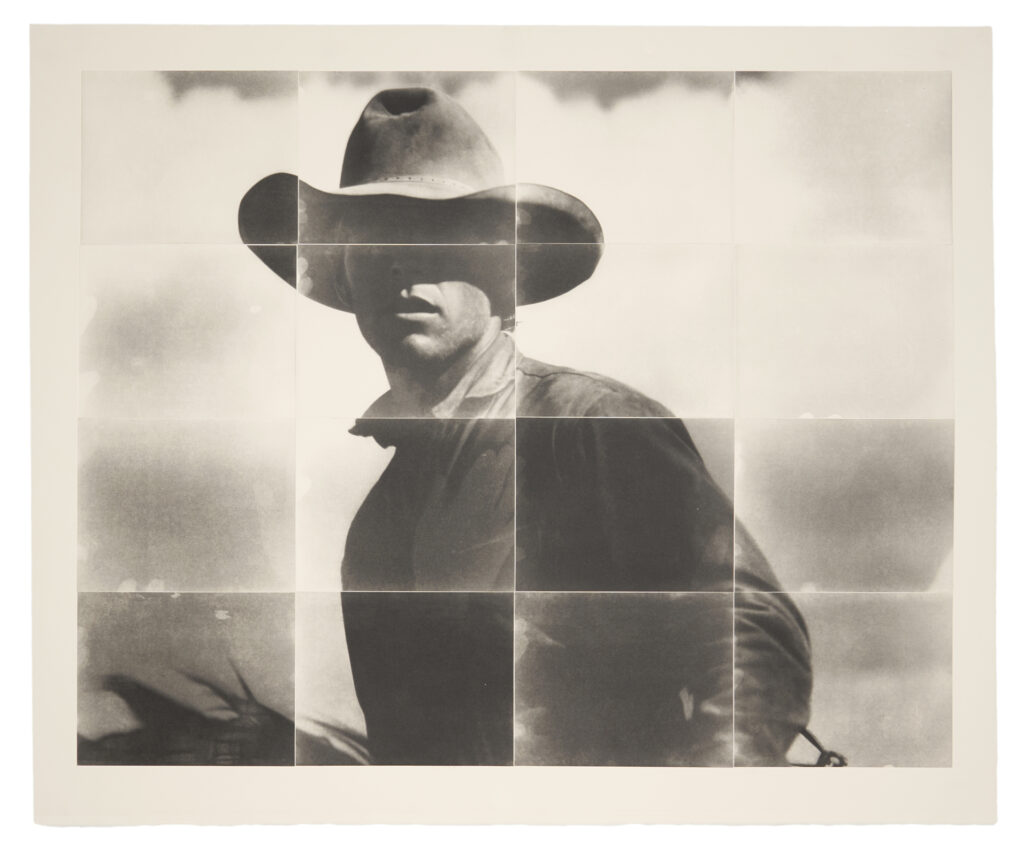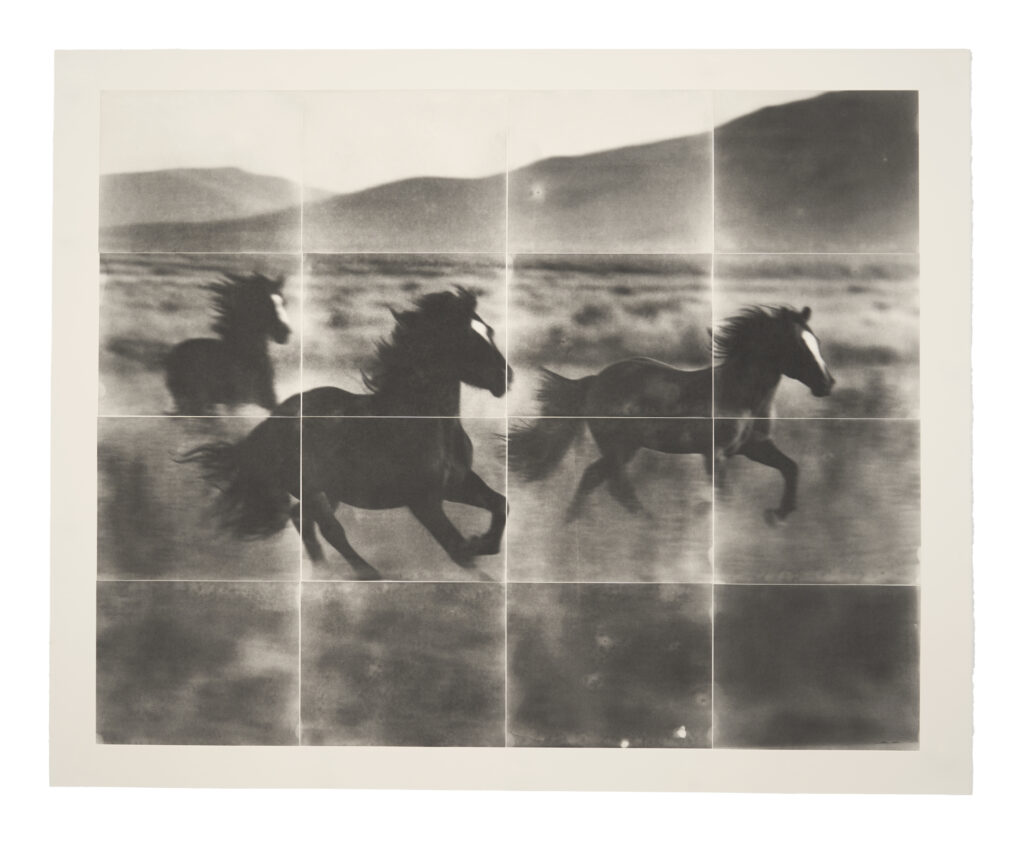Baud Postma / Paris Photo / November 2025
Baud Postma
‘Death of the Author‘
As an artist whose practice has long centred on a labour-intensive, technical analogue approach to large-format photography, Postma’s incorporation of AI into his latest body of work might seem unexpected however, this shift represents both an evolution of existing processes and a continuation of his conceptual inquiries.
Embracing the new skill of prompt engineering, Postma crafts images within generative text-to-image AI platforms. Rather than viewing these digital results as finished works, he subjects them to a series of analogue transformations. His intention is to create work that exists in dialogue with the past, present, and future of photography-work that invites viewers to consider how emerging technologies can be co-opted to coexist with, and even enhance, traditional practices rather than replace them. Ultimately, Postma challenges us to rethink what it means to “take a photograph.”
The project’s title, Death of the Author, is drawn from Roland Barthes’ influential 1967 essay, which, albeit indirectly, offers a compelling framework for examining photography in the age of AI. Postma’s work delves into pressing themes such as authenticity, originality, and appropriation, reflecting on photography’s complex-and increasingly tenuous-role as a arbiter of reality. By engaging with these ideas, Postma contributes to a longstanding dialogue in photography, echoing the legacy of the Pictures Generation artists, whose exploration of these themes has gained renewed relevance in the context of AI-driven creativity.
Pulling his AI-generated images into the analogue realm, Postma begins with an unconventional technique for creating fibre based darkroom prints from his AI imagery. From these prints, he produces etching plates, which are then used to create the final intaglio prints. This approach allows him to critically engage with AI while staying true to his existing visual language and passion for handmade, process-driven photography. Without fetishising analogue methods, Postma emphasises the enduring importance of the physical print in an era where images increasingly exist on screens, detached from the material world.
Postma’s choice of subject matter the Cowboy and its connection to the frontier offers a powerful metaphor for the AI revolution. The archetypal Cowboy embodies a range of conflicting themes that resonate deeply with the dualities of AI. On one hand, it symbolises optimistic ideals of freedom, opportunity, and self-determination; on the other, it evokes histories of exploitation and extreme cultural upheaval.
The Cowboy, while rooted in historic and contemporary reality, has been endlessly mythologized through its pervasive representation in popular culture. For decades, it has stood as one of the world’s most recognisable archetypes, carrying a profound cultural resonance across fashion, film, music, and literature. Few subjects occupy such a liminal space between fact and fiction. This inherent complexity makes the Cowboy a compelling subject for AI to interpret. It challenges AI models to define a myth or offer its own interpretation of an interpretation. Through this work, Postma invites reflection on originality, ownership, history and myth in a world increasingly shaped by the interplay between human traditions and synthetic intelligence.

Photopolymer intaglio edition of 10 + 1 AP
Image size: 24x 30 inches Paper size: 29 x 35 inches

Photopolymer intaglio edition of 8 + 1 AP
Image size: 32 x 40 inches Paper size: 36 x 44 inches

Photopolymer intaglio edition of 8 + 1 AP
Image size: 32 x 40 inches Paper size: 36 x 44 inches

Photopolymer intaglio edition of 12 + 1 AP I
Image size: 16 x 20 inches Paper size: 22.5 x 24.5 inches

Photopolymer intaglio edition of 12 + 1 AP
Image size: 20 x 16 inches Paper size: 24.5 x 22.5 inches

Photopolymer intaglio edition of 15 + 1 AP
Image size: 8 x 8 inches Paper size: 14 x 11 inches

Photopolymer intaglio edition of 15 + 1 AP
Image size: 8 x 8 inches Paper size: 14 x 11 inches
